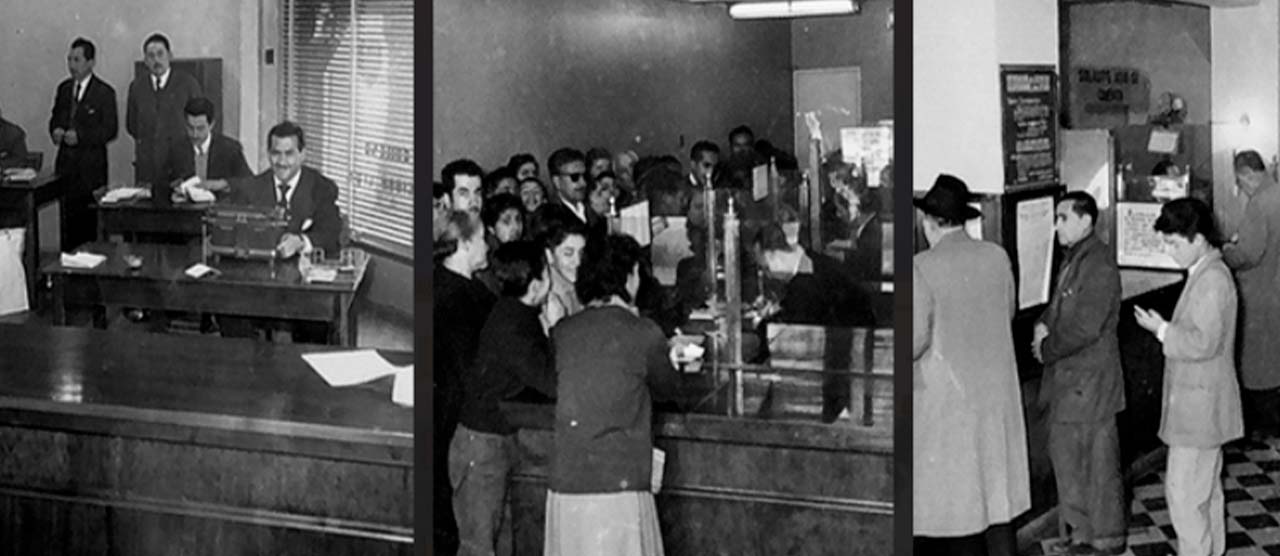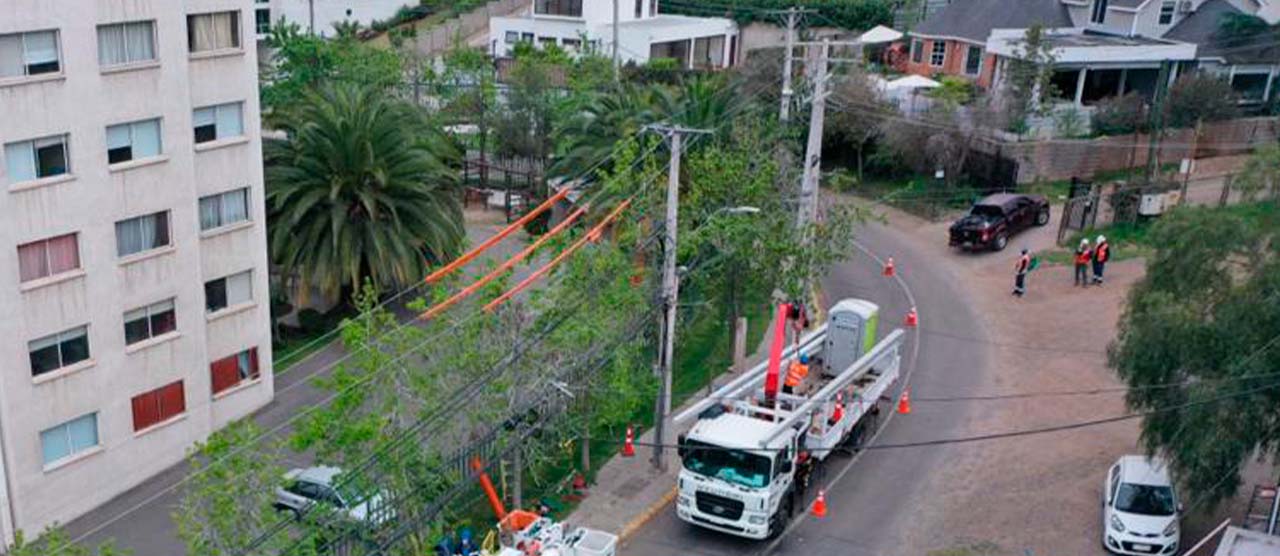
From door-to-door billing to electronic payment
"Hello, how are you? I'm here to collect payment for your electricity bill," a phrase often heard by people living in Santiago during the first half of the 20th century. Money collectors were still going door to door, collecting monthly electricity payments from Chilectra's (now Enel Distribución) nearly 300,000 customers, up until 1952.
This system may sound unthinkable today, and it gradually ceased, most notably with the opening of the first payment office on Arturo Prat Street. This office system made paying electricity bills faster and easier and was unprecedented for the time being. Soon, dozens of offices were being opened around Santiago in areas with the highest density of customers.
However, this face-to-face system did not have the familiar immediacy today's customers know. "One would go and pay, but the payment would not register for a few days. There was a time delay in updating the customer's billing information, causing problems for already disconnected clients because of overdue debts," says María Luisa Sagredo, Billing Manager at Enel Distribución. In 2013, the company updated its software to allow online payments to be reflected instantly in the billing system. "We went from having a very manual system to an automated one, which solved numerous problems we had experienced with customers," Sagredo said.
Before the pandemic, we saw a trend toward online payments, boosted in recent years. Today, 78% of Enel Distribución's electricity bills are paid digitally, mainly via the www.enel.cl website. However, there are still more than 3,000 payment centers around the country for in-person payments, at supermarkets and other locations.
“Our main focus is to enable customers to be able to pay wherever is most convenient for them and to do so quickly and reasonably. In that way, we are fulfilling our commitment to providing a quality service.”
Daylight Saving Time in times of drought
Chileans are used to putting their clocks forward an hour in summer and back in winter. The idea of Daylight Savings Time met ridicule when first introduced in 1968. Authorities did not initially see how it could help Chile overcome the worst national drought of the last century.
In the 1960s, Chile received most of its energy supply mainly from hydroelectric power plants. However, with low rainfall, reservoirs' levels were low, leading authorities to decree strict water rationing. As a result, the city chose to turn on public lighting on one side of the street and banned watering gardens or filling swimming pools.
Peak demand for energy was between 7:00 p.m. and 8:00 p.m. in homes and store windows. For that reason, authorities proposed to extend nighttime electricity rationing, an idea that did not convince former Chilectra (now Enel Distribución) engineer Edinson Román. Román delivers an account of his experience in a video found on www.revoluz100.cl.
"Turning off public lighting in streets, prisons, hospitals, and clinics was outrageous and came at an enormous social cost," Román said in a video uploaded to the multimedia platform.
Concerned about the measure authorities were about to introduce, Edinson realized that shops would have to close earlier if clocks were put forward an hour. "At home, I drew a few charts on graph paper showing energy demand in both standard time and the alternative schedule and decided it was a wonderful idea. I arrived at a meeting on a Monday to tell the President that we had to ration electricity at night. I said we had to change the clocks, and they all laughed, thinking it was a joke," recalls Román. But after the initial reaction, after a few days, they realized that it made sense because people wanted to get home before sunset. "This improved people's quality of life," he said.
Daylight Savings Time was adopted on November 2, 1968, and continues to this day between September and March.

Lifesaving posts
Up until the 1980s, electricity poles were made of wood. Traffic accidents and adverse weather conditions threatened daily to interrupt the electricity supply for customers around the city. As a solution, the company began replacing wooden poles with concrete. But there was still a problem. A former executive, Ricardo Miranda, shared his thoughts with Revoluz100 in a video available on the platform. Miranda recalls that the concrete poles were dangerous if there was an accident. "If a bus crashed, it would get wrapped around the pole. People died from the brute force of the collision," he said.
Electricity post-manufacturing has improved over the years with the development of new technologies. Now, they are more durable and sturdier but also more flexible if they suffer an impact and are no longer as dangerous to drivers and passengers.
In 2021, Enel Distribución became the first Chilean company to develop electricity poles from recycled and reused materials. The project seeks to recover materials from 4,000 concrete poles scrapped yearly. In doing so, the company is incorporating more sustainable and circular processes into its operations to reduce waste and carbon footprint in producing posts from aggregates extracted for each life cycle. The project aims to reuse nearly 4,900 tons of concrete and 225 tons of steel.





